Do Hiatal Hernias Hurt? Understanding Symptoms, Causes, and Treatment Options
What are the symptoms of a hiatal hernia. How is a hiatal hernia diagnosed. What are the treatment options for hiatal hernias. Can hiatal hernias cause chest pain. When should you seek medical help for a hiatal hernia.
What Is a Hiatal Hernia?
A hiatal hernia occurs when the upper part of the stomach pushes through the diaphragm, the muscle separating the abdomen from the chest cavity. This condition can lead to various symptoms and complications, primarily related to acid reflux.
There are four types of hiatal hernias:
- Type I (Sliding Hiatal Hernia): The most common type, where the stomach intermittently slides up into the chest.
- Types II, III, and IV (Paraesophageal Hernias): These occur when a portion of the stomach pushes up into the chest adjacent to the esophagus.
Common Causes of Hiatal Hernias
Hiatal hernias can develop due to various factors, including:
- Being born with an unusually large hiatus
- Injury or trauma to the area, such as force from a seatbelt during an accident
- Obesity
- Persistent and intense pressure on the surrounding muscles
Understanding the underlying causes can help in prevention and management of hiatal hernias.

Recognizing Hiatal Hernia Symptoms
Do hiatal hernias always cause noticeable symptoms? Not necessarily. Many people with hiatal hernias may not experience any symptoms at all. However, when symptoms do occur, they often include:
- Heartburn, especially after eating
- Chest pain or pressure
- Difficulty swallowing
- Regurgitation of food or liquids into the mouth
- Shortness of breath
The severity of symptoms can vary greatly among individuals and may worsen when lying down or bending over.
Diagnosing Hiatal Hernias: What to Expect
How do doctors diagnose hiatal hernias? The diagnostic process typically involves:
- Medical history review and physical examination
- Barium X-ray or CT scan of the upper digestive tract
- Endoscopy examination
During the diagnosis, healthcare providers will look for specific signs and symptoms associated with hiatal hernias. They may also perform additional tests to rule out other conditions with similar symptoms.
Treatment Options for Hiatal Hernias
How are hiatal hernias treated? Treatment approaches can vary depending on the severity of symptoms and the individual’s overall health. Options include:

Lifestyle Changes and Medication
For mild cases, doctors often recommend:
- Eating smaller, more frequent meals
- Avoiding trigger foods (e.g., fatty, acidic, or caffeinated items)
- Maintaining a healthy weight
- Elevating the head while sleeping
- Quitting smoking
- Taking over-the-counter antacids or prescription medications
Surgical Interventions
In more severe cases or when conservative treatments fail, surgical repair may be necessary. Surgical options typically involve:
- Laparoscopic surgery to reposition the stomach and tighten the diaphragm opening
- Reconstruction of the esophageal valve to prevent reflux
The choice of treatment depends on factors such as the patient’s age, overall health, and the severity of symptoms.
Complications and Associated Conditions
Can hiatal hernias lead to other health issues? While many hiatal hernias are harmless, some potential complications include:
- Gastroesophageal reflux disease (GERD)
- Esophagitis (inflammation of the esophagus)
- Barrett’s esophagus (precancerous changes in the esophageal lining)
- Esophageal stricture (narrowing of the esophagus)
Understanding these potential complications highlights the importance of proper management and treatment of hiatal hernias.

Living with a Hiatal Hernia: Lifestyle Adjustments
How can individuals manage their daily lives with a hiatal hernia? Adopting certain lifestyle changes can significantly improve quality of life:
- Maintaining an upright posture after meals
- Wearing loose-fitting clothing to reduce pressure on the abdomen
- Practicing stress-reduction techniques
- Avoiding eating close to bedtime
- Incorporating gentle exercises that don’t increase abdominal pressure
These adjustments, combined with medical treatments, can help minimize symptoms and improve overall well-being.
When to Seek Medical Attention
How do you know when a hiatal hernia requires immediate medical attention? While many hiatal hernias are manageable with lifestyle changes and medication, certain symptoms warrant prompt medical evaluation:
- Severe, persistent chest pain
- Difficulty swallowing or breathing
- Vomiting blood or passing black stools
- Unexplained weight loss
- Persistent nausea or vomiting
These symptoms could indicate a more serious condition or complication related to the hiatal hernia, requiring immediate medical intervention.
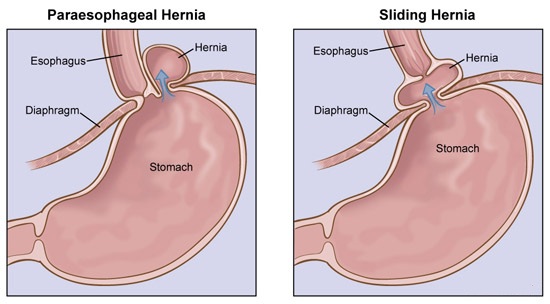
Prevention Strategies for Hiatal Hernias
Are there ways to prevent hiatal hernias from developing or worsening? While some risk factors, such as genetics, cannot be controlled, several preventive measures can help reduce the likelihood of developing a hiatal hernia or exacerbating an existing one:
- Maintaining a healthy weight to reduce pressure on the diaphragm
- Practicing good posture to alleviate strain on the abdominal muscles
- Avoiding heavy lifting or straining during bowel movements
- Quitting smoking to reduce coughing and abdominal pressure
- Managing stress through relaxation techniques
By incorporating these strategies into daily life, individuals can potentially lower their risk of developing or worsening a hiatal hernia.
Hiatal Hernias in Special Populations
Do hiatal hernias affect certain groups differently? While hiatal hernias can occur in anyone, some populations may face unique challenges or considerations:
Pregnant Women
Pregnancy can increase the risk of developing or exacerbating a hiatal hernia due to increased abdominal pressure. Management typically focuses on symptom relief through lifestyle modifications and safe medications.

Elderly Individuals
Older adults may be more susceptible to hiatal hernias due to weakening muscles and tissues. Treatment approaches may need to be tailored to account for other health conditions and medications.
Obese Patients
Obesity is a significant risk factor for hiatal hernias. Weight loss can be an essential component of treatment and may improve symptoms significantly.
Understanding these population-specific considerations can help in developing more effective and personalized treatment plans.
Advances in Hiatal Hernia Research and Treatment
What new developments are emerging in the field of hiatal hernia management? Ongoing research and technological advancements are continually improving our understanding and treatment of hiatal hernias:
- Minimally invasive surgical techniques: Laparoscopic and robotic-assisted surgeries are becoming more refined, offering faster recovery times and fewer complications.
- Magnetic sphincter augmentation: A new device that reinforces the lower esophageal sphincter to prevent reflux in patients with hiatal hernias.
- Endoscopic therapies: Non-surgical procedures that can help manage symptoms in certain cases.
- Improved diagnostic tools: Advanced imaging techniques allowing for more accurate diagnosis and treatment planning.
These advancements offer hope for improved outcomes and quality of life for individuals suffering from hiatal hernias.
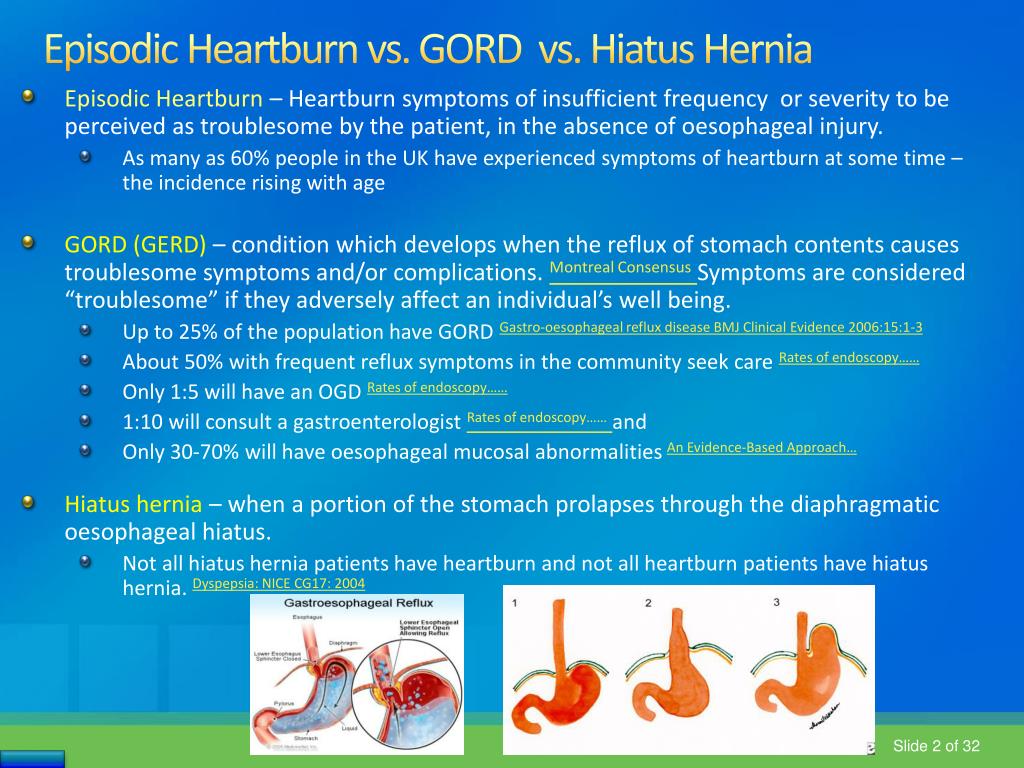
Dietary Considerations for Hiatal Hernia Management
How does diet impact hiatal hernia symptoms? Proper nutrition plays a crucial role in managing hiatal hernias and associated symptoms:
Foods to Avoid
- Spicy and acidic foods
- Fatty or fried foods
- Caffeine and carbonated beverages
- Chocolate
- Alcohol
Beneficial Foods
- High-fiber fruits and vegetables
- Lean proteins
- Whole grains
- Non-citrus fruits
- Herbal teas
Adopting a diet that minimizes trigger foods and incorporates soothing options can significantly reduce symptoms and improve overall digestive health.
The Psychological Impact of Living with a Hiatal Hernia
How does a hiatal hernia affect mental health and well-being? Living with a chronic condition like a hiatal hernia can have significant psychological effects:
- Anxiety about potential flare-ups or complications
- Depression related to dietary restrictions and lifestyle changes
- Social isolation due to symptoms or dietary limitations
- Stress from managing the condition and its impact on daily life
Addressing the psychological aspects of hiatal hernias is crucial for comprehensive care. Mental health support, stress management techniques, and patient support groups can play vital roles in improving overall quality of life for those affected by hiatal hernias.
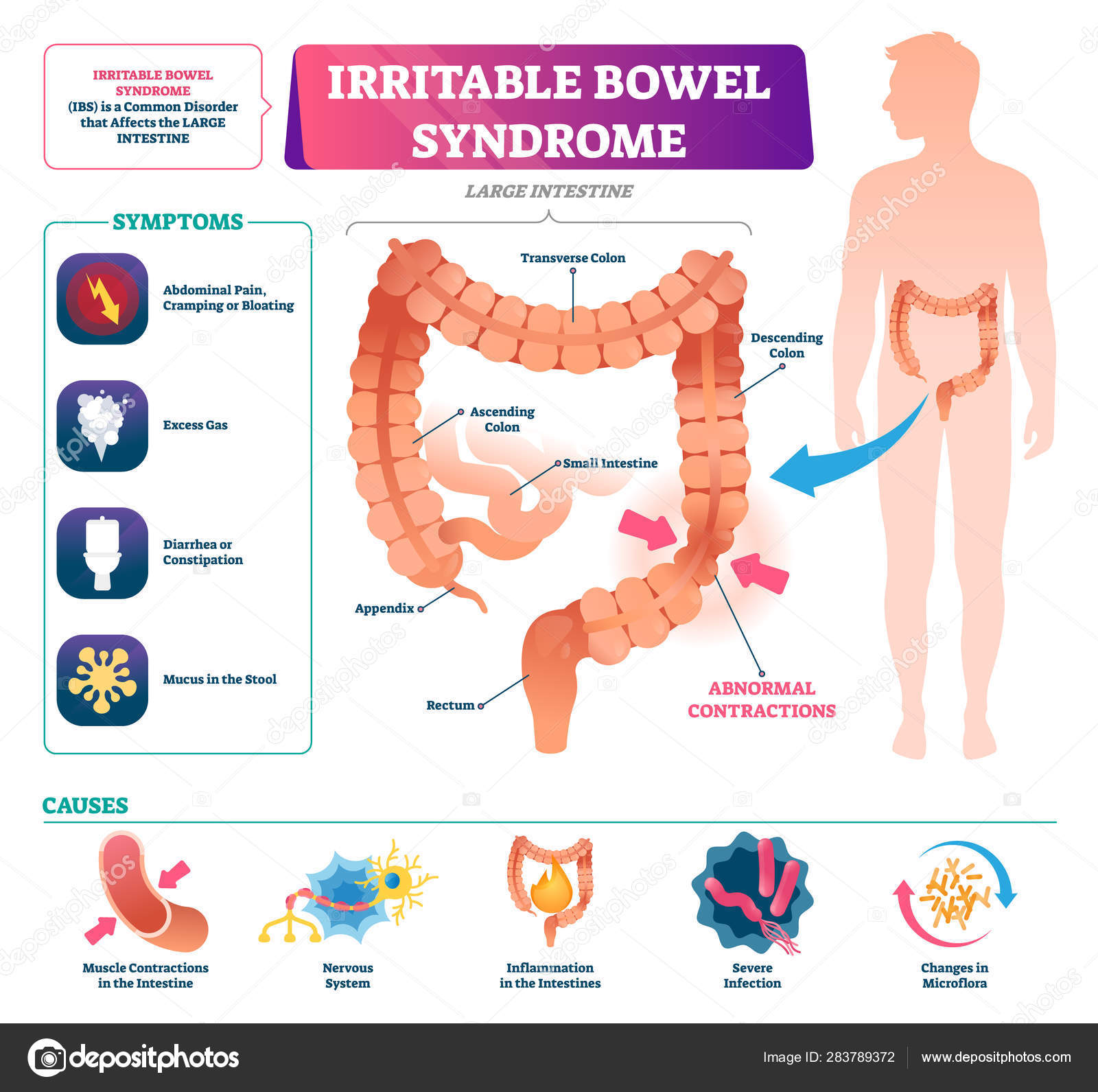
Alternative and Complementary Therapies for Hiatal Hernias
Are there alternative approaches to managing hiatal hernia symptoms? While traditional medical treatments remain the cornerstone of hiatal hernia management, some individuals find relief through complementary therapies:
- Acupuncture: May help reduce acid reflux symptoms
- Herbal remedies: Such as licorice root or chamomile tea, which may soothe digestive discomfort
- Relaxation techniques: Including meditation and yoga, to reduce stress and muscle tension
- Chiropractic care: Some practitioners claim manipulations can help reposition the stomach, though scientific evidence is limited
It’s important to note that while these alternative approaches may provide symptom relief for some individuals, they should not replace conventional medical treatment. Always consult with a healthcare provider before incorporating alternative therapies into your treatment plan.
The Role of Exercise in Hiatal Hernia Management
Can exercise help or hinder hiatal hernia symptoms? Regular physical activity can play a significant role in managing hiatal hernias and their associated symptoms:

Benefits of Exercise
- Weight management, reducing pressure on the diaphragm
- Improved digestion and bowel function
- Stress reduction
- Strengthening of core muscles
Recommended Exercises
- Low-impact aerobic activities like walking or swimming
- Gentle yoga or stretching routines
- Core-strengthening exercises that don’t increase abdominal pressure
Exercises to Avoid
- High-intensity workouts that strain the abdominal muscles
- Heavy weightlifting
- Exercises that involve lying flat or inverted positions
Incorporating appropriate exercises into daily routines can contribute to overall health and potentially alleviate hiatal hernia symptoms. However, it’s crucial to consult with a healthcare provider before starting any new exercise regimen, especially for those with existing health conditions.
Long-term Outlook and Prognosis for Hiatal Hernia Patients
What can individuals with hiatal hernias expect in the long run? The prognosis for hiatal hernia patients varies depending on several factors:
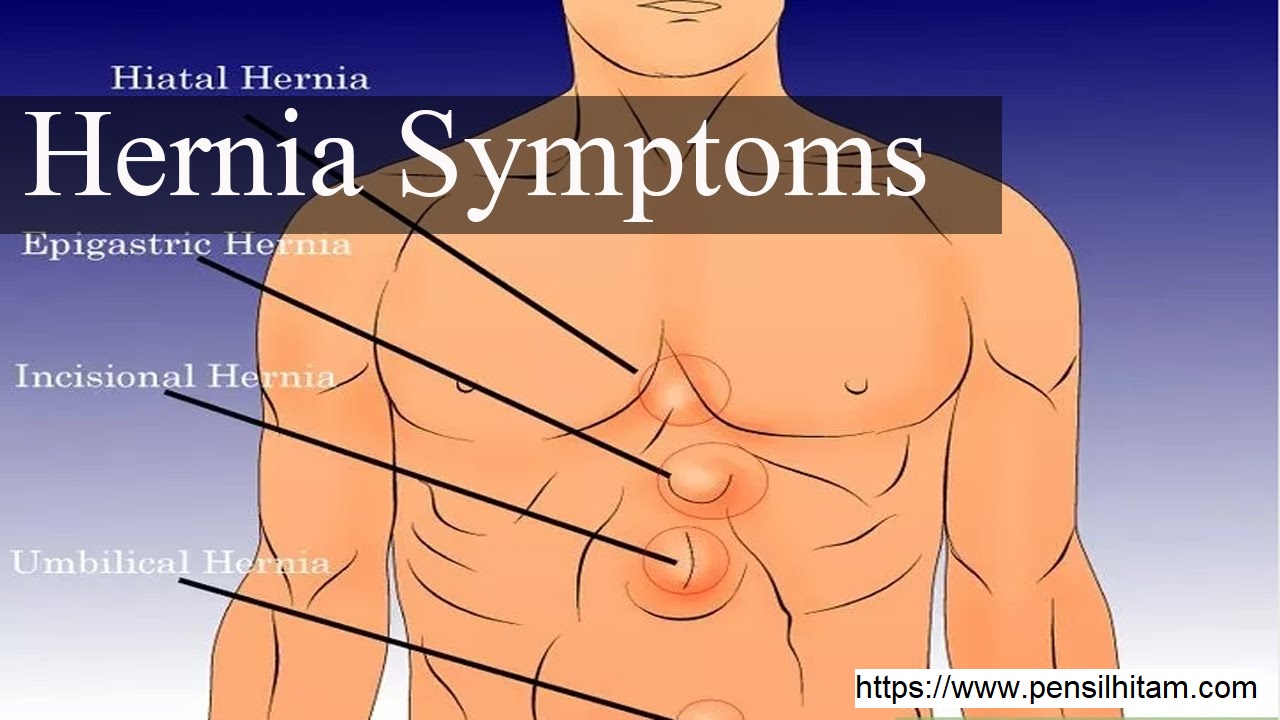
- Severity of the hernia
- Presence of complications
- Effectiveness of treatment
- Overall health and lifestyle factors
For many individuals, hiatal hernias can be effectively managed with lifestyle modifications and medications, allowing for a good quality of life. In cases where surgery is necessary, modern techniques often lead to positive outcomes with relatively low rates of recurrence.
Regular follow-ups with healthcare providers are essential for monitoring the condition and adjusting treatment plans as needed. With proper management and care, most individuals with hiatal hernias can lead normal, active lives with minimal disruption from their condition.
It’s important to remember that each case is unique, and the long-term outlook can vary. Staying informed, adhering to treatment plans, and maintaining open communication with healthcare providers are key factors in achieving the best possible outcomes for those living with hiatal hernias.
Hiatal Hernia | Johns Hopkins Medicine
What is a hiatal hernia?
Unlike ventral hernias, which protrude through the abdominal wall, a hiatal hernia occurs when the upper part of the stomach pushes up into the chest through a small opening in the diaphragm, the muscle that separates the abdomen from the chest. A hiatal hernia results in retention of acid and other contents since the stomach tends to get squeezed by this opening in the diaphragm. These acids and other substances can easily back up — reflux or regurgitate — into the esophagus.
There are four types of hiatal hernias. The vast majority of hiatal hernias are called type I, or sliding hiatal hernias. In this type, the stomach intermittently slides up into the chest through a small opening in the diaphragm. Type II, III and IV hiatal hernias are called paraesophageal hernias. They occur when a portion of the stomach pushes up into the chest adjacent to the esophagus.
Hiatal Hernia Causes
Hiatal hernias can occur for a number of reasons, including:
Being born with an unusually large hiatus
Injury or trauma to the area such as force from a seatbelt during an accident
Obesity
Persistent and intense pressure on the surrounding muscles caused by:
Hiatal Hernia Diagnosis
To identify a hiatal hernia, a health care provider may use multiple diagnostic techniques but will begin with a medical history and physical examination. The provider will inquire about and/or look for:
The provider will inquire about and/or look for:
Additional diagnostics may include:
Barium X-ray or CT of the upper digestive tract to identify the location and positioning of the gastric organs
Endoscopy exam, during which your doctor passes a thin, flexible tube equipped with a light and video camera (endoscope) down the throat and into the esophagus and stomach to check for inflammation
Hiatal Hernia Treatments
The symptoms associated with hiatal hernia, such as acid reflux, can be treated with lifestyle changes and medication. Surgery may be necessary to repair the hiatal hernia.
Specific treatment for a hiatal hernia will be determined by your doctor based on multiple factors, including your general health, anatomy, extent and location of the hernia, and severity of symptoms such as acid reflux. Any instance in which the stomach or abdominal organs rotate or twist, causing severe pain, blockage and possible strangulation in which blood supply is lost, is always treated with emergency surgery.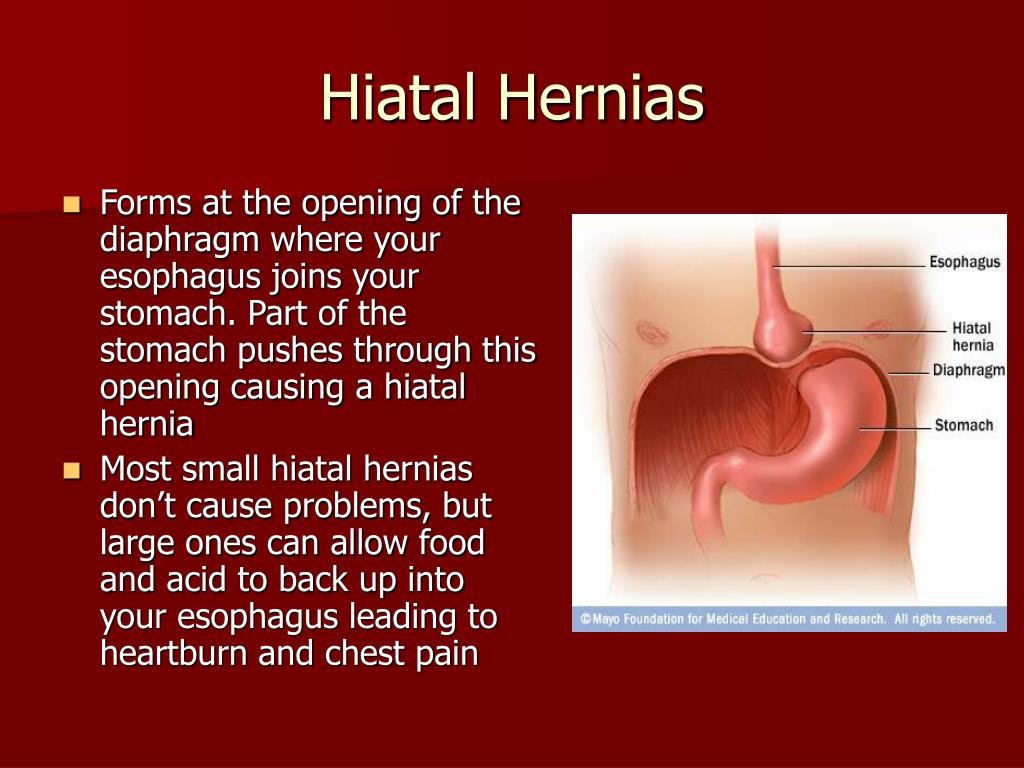
Hiatal Hernia Lifestyle and Medication Treatments
Many people do not experience any symptoms related to their hiatal hernia, or their symptoms, like heartburn, are mild. Generally, the symptoms of hiatal hernias can be controlled with lifestyle changes and medication such as:
Eating meals at least three to four hours before lying down
Eating moderate to small portions of foods
Limiting fatty foods, acidic foods (citrus fruits or juices), foods containing caffeine and alcoholic beverages
Losing weight or maintaining a healthy weight
Over-the-counter antacids or antihistamines; your physician may prescribe a stronger medication to manage your symptoms
Sleeping in a slightly elevated position
Smoking cessation
Hiatal Hernia Surgical Treatments
Surgery to repair a hiatal hernia is usually performed through small incisions during which the stomach and any other surrounding tissue are pulled down from the chest cavity and back into the abdomen. The surgeon will also make the opening in your diaphragm smaller and may reconstruct an esophageal valve to treat reflux.
The surgeon will also make the opening in your diaphragm smaller and may reconstruct an esophageal valve to treat reflux.
Alternatively, hiatal hernia can be repaired through the chest.
Treatment and when to seek help
People with a hiatal hernia can experience heartburn, often after eating. This can cause an individual to experience a painful, burning feeling in their chest. When the hernia is larger, it can also cause pain or pressure in the chest if it affects the heart and lungs.
A hiatal hernia is where the upper part of the stomach, or another internal organ, bulges through the opening in the diaphragm, called the hiatus.
The diaphragm is a thin muscle separating the abdomen and the chest. It helps stop acid from coming up into the esophagus, or food pipe. A hiatal hernia makes it easier for acid to reach the esophagus.
This article looks at what chest pain from a hiatal hernia feels like, whether chest pain signifies that a hernia is worsening, treatment options, and when to contact a doctor.
Hiatal hernia can cause chest pain and has associations with the following conditions.
Gastroesophageal reflux disease (GERD) and heartburn
In many cases, chest pain from a hiatal hernia has links to acid and the contents of the stomach traveling up to the esophagus.
This is called gastroesophageal reflux disease (GERD) and can cause a person to experience heartburn. Heartburn feels like a burning sensation in the middle of the chest and can cause a foul, acidic taste in the mouth.
According to a 2019 article, the chest pain related to GERD can feel similar to the pain associated with a heart attack. The pain can also occur without heartburn.
Additionally, GERD can cause the muscles in the esophagus to spasm. This can also cause a person to experience chest pain that they could mistake for a heart attack.
Heart and respiratory system
Hiatal hernias can affect the respiratory system, which may also cause pain or pressure in the chest.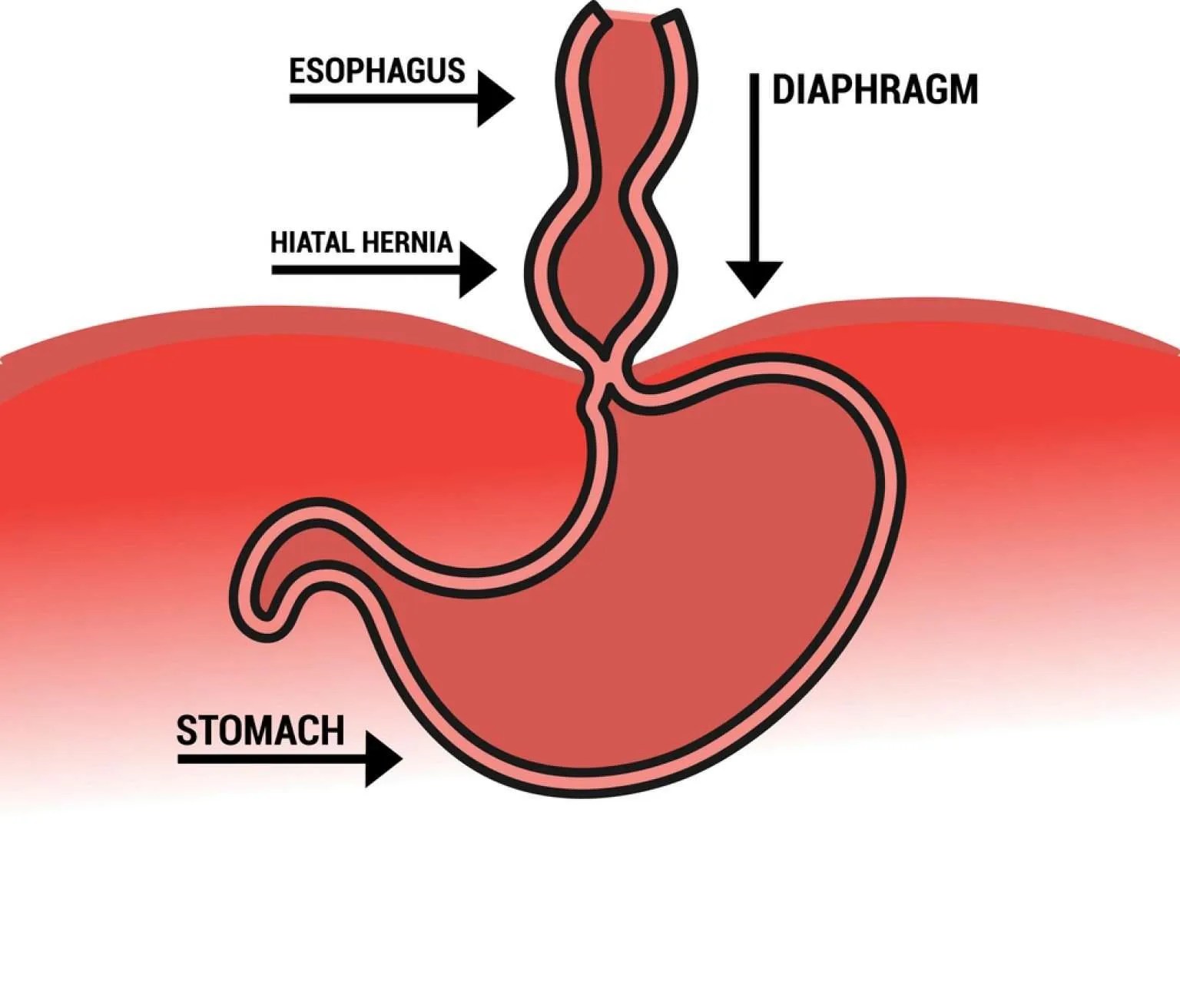
As the hernia enlarges and takes up more space, it can compress the arteries in the heart and lungs. This may cause a part of the lung to collapse, which can lead to the following:
- trouble breathing
- an intense tightness in the chest
- shortness of breath
Hiatal hernias may also cause pressure on the heart, called tamponade. The hernia can compress the heart, causing shortness of breath and chest discomfort.
Chest pain can signify a strangulated or worsening hiatal hernia.
A hernia becomes strangled when the blood supply to the hernia is cut off.
A doctor may suspect that a hiatal hernia is strangulated if a person has severe chest or upper abdominal pain, usually after a meal. In this scenario, individuals may also experience retching and vomiting.
If people suspect their hernia is worsening, they should contact a doctor.
Depending on the severity of a hiatal hernia, a person may not require medical treatment.
A 2022 article notes that while hiatal hernias are common and affect up to 60% of individuals over 50 years of age, only 9% experience symptoms. People who do not experience symptoms do not require medical treatment.
People who do not experience symptoms do not require medical treatment.
Home treatment and management
The following can help manage the symptoms of a hiatal hernia:
- stopping smoking, if applicable
- eating small meals
- avoiding oily or fried foods
- avoiding caffeine
- avoiding alcohol
- maintaining a moderate weight
- taking over-the-counter (OTC) antacids
- being upright while eating
- eating at least 3 hours before going to bed
Medical treatment
If a person experiences symptoms of a hiatal hernia, such as GERD, they may require medical treatment.
This may involve using proton pump inhibitors, which are medications to treat heartburn, acid reflux, GERD, and stomach ulcers. Doctors may also recommend surgical procedures.
Procedures and surgeries include:
- Transoral incisionless fundoplication: This procedure does not involve incisions. A doctor places an endoscope down the throat and into the esophagus to tighten it.
 They then wrap parts of the stomach — the cardia and the fundus — around the esophagus.
They then wrap parts of the stomach — the cardia and the fundus — around the esophagus. - Endoluminal fundoplication: A doctor places an endoscope, a tube that attaches to a camera and light, down the throat. They then tighten the area where the esophagus joins the stomach to prevent acid from flowing into the esophagus.
- Endoscopic anterior fundoplication with the Medigus Ultrasonic Surgical Endostapler: A doctor uses surgical staples to attach the fundus to the esophagus. This procedure stops acid reflux.
- Nissen fundoplication: Surgeons can perform this procedure laparoscopically, which means through tiny incisions. They insert a laparoscope, a tube with a camera and light attached, to repair the hernia and tighten the stomach opening.
- Open surgery: This involves the surgeon making a larger incision into the abdomen. The surgeon pulls the stomach up into the abdominal cavity and wraps the fundus around the lower part of the food pipe.
 This prevents acid from leaking up into the esophagus.
This prevents acid from leaking up into the esophagus.
Someone should contact a doctor if they experience chest pain, whether they believe it is due to a hiatal hernia. Chest pain may indicate a serious medical condition, such as a heart attack.
Individuals should also contact a doctor if their symptoms:
- persist for longer than 3 weeks
- do not resolve from using OTC antacids
- worsen
A hiatal hernia can cause a person to experience chest pain. One of the most common presentations of a hiatal hernia is GERD. GERD can cause a person to experience heartburn, causing discomfort and pain in the chest.
It can also cause the esophageal muscles to spasm, resulting in chest pain that feels similar to chest pain relating to a heart attack.
Other causes of chest pain from a hiatal hernia are pressure on the lungs or chest due to the expansion of the hernia. These may cause shortness of breath and chest discomfort.
Severe chest pain, along with some other symptoms such as retching and fever, may indicate that a hiatal hernia is strangulated.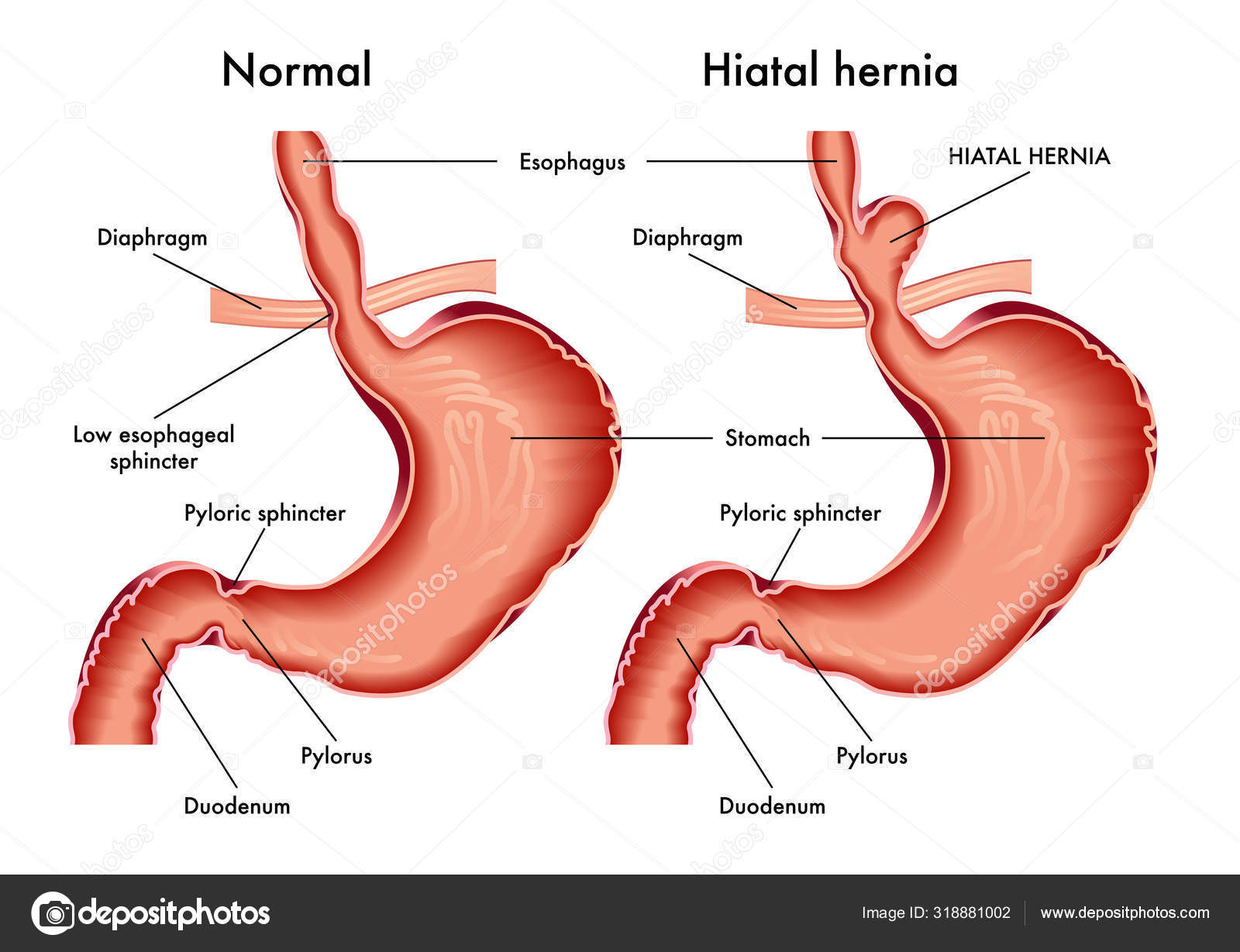
This is a medical emergency, and anyone with these symptoms should seek immediate emergency medical assistance.
People should also seek medical attention immediately if they experience chest pain. This is because chest pain can be a sign of a heart attack.
Hiatus hernia – HH symptoms and treatment
Table of contents
Hiatus hernia affects several organs in aggregate. The esophagus passes into the epigastrium through the hiatal opening in the diaphragm, and hiatal hernia occurs when part of the stomach is forced into the chest cavity. The most vulnerable are considered to be pregnant women, people over 50 and obese. Also, a hernia of the esophageal opening of the diaphragm can be caused by excessive strength exercises, lifting heavy loads, excessive stress during bowel movements, etc. Hiatal hernia of the diaphragm is predominantly an acquired disease, but hereditary cases are also observed. With the manifestation of relevant symptoms and the identification of HH, a decision is made to perform an operation to remove the hernia. In some cases, you can try to do conservative treatment without surgery, but this method is not applicable to all types of HH and only temporarily relieves the symptoms of the disease.
In some cases, you can try to do conservative treatment without surgery, but this method is not applicable to all types of HH and only temporarily relieves the symptoms of the disease.
Varieties of HH
Hiatal hernia is classified on the basis of specific displacement and two key types are distinguished in its typology:
- practice that does not require hospital treatment.
- paraesophageal hiatal hernia is the most dangerous case for health, causing serious complications and disrupting blood flow to vital organs.
In addition, there are several stages of severity of the course of the disease (stages I, II, III and IV) based on the degree of transition of the stomach into the sternal region.
Factors affecting the development of HH
HH develops due to a pathological change in the size of the esophageal opening. With minor deviations from the permissible values, a hernia of the esophageal opening of the diaphragm does not show symptoms until a targeted diagnosis, and the signs of HH are easily confused with manifestations of other diseases of the gastrointestinal tract or from the cardiovascular system.
Hernia of the alimentary opening of the diaphragm can manifest itself due to many circumstances and is currently increasingly common in medical practice.
Main factors in the development of HH:
- muscle hypotension due to age;
- chronic diseases of the gastrointestinal tract;
- intra-abdominal hypertension;
- weight fluctuation;
- complications from operations on the esophagus;
- a consequence of trauma to the abdomen.
As for the complications that hiatal hernia can provoke, the most common is reflux esophagitis. The obvious symptoms of reflux esophagitis include regular bouts of heartburn after eating. Usually this complication is inherent if the patient has a sliding (axial) hiatal hernia, and as a treatment, the patient is prescribed therapy that normalizes acidity. Erosions of the esophagus and stomach are also quite often manifested, which in turn, if not detected and treated in time, can lead to a precancerous state of latent gastrointestinal bleeding and, as a result, cause anemia. Moreover, hiatal hernia can lead to peritonitis and sepsis due to compression of the hernia. With obvious symptoms of intoxication, vomiting, acute persistent pain, hospitalization is indicated as soon as possible.
Moreover, hiatal hernia can lead to peritonitis and sepsis due to compression of the hernia. With obvious symptoms of intoxication, vomiting, acute persistent pain, hospitalization is indicated as soon as possible.
Hiatal hernia is more often asymptomatic, but at the same time has a number of symptoms that may indicate the presence of the disease.
Symptoms of HH
Often HH is so small that it is hidden, but in more severe cases the following symptoms occur:
- frequent heartburn;
- belching;
- hiccups;
- difficulty and discomfort in swallowing;
- extremely fast satiety;
- sharp pains in chest;
- sore tongue;
- attacks of dry cough.
As practice shows, a patient with a confirmed diagnosis of hiatal hernia usually suffers immediately from a number of symptoms and needs treatment based on the diagnosed type of HH.
For correct treatment it is necessary to carry out a complete diagnosis, taking into account the most detailed questioning of the patient for the presence of symptoms, data on acidity and indicators of hernia. Hiatus hernia is detected by contrast radiography, esophageal motility studies, gastroscopy with biopsy, and daily pH-metry.
Hiatus hernia is detected by contrast radiography, esophageal motility studies, gastroscopy with biopsy, and daily pH-metry.
Outpatient treatment of HH
Treatment of HH begins with conservative methods, if the severity of the symptoms and the severity of the course of the disease allow. Since a hernia of the esophageal opening of the diaphragm can proceed in a latent form for a long time and with a high degree of probability the patient has already taken certain actions to alleviate his condition, first of all, they conduct detailed consultations with a gastroenterologist to determine the correct treatment tactics. There are general rules, following which you can significantly improve the quality of life:
- adhere to the fractional meal plan;
- limit the consumption of certain foods that cause heartburn and adversely affect the digestive tract;
- do not lie down for 3 hours after eating;
- stop drinking alcohol and smoking.
It should be added that conservative treatment implies only relief of symptoms of reflux esophagitis and is effective only at the initial stage of HH.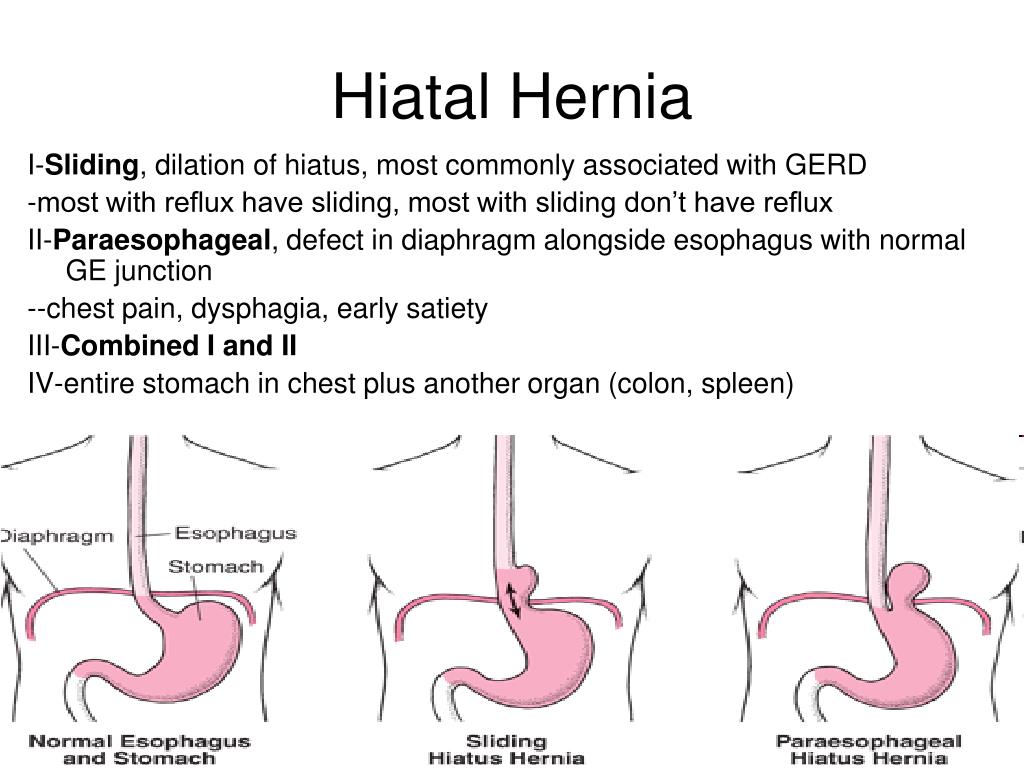
Surgical treatment of HH
If negative dynamics persist, doctors may decide that surgery is necessary. This is a more radical way of treatment, but also more effective, especially in case of acute exacerbations of the disease and if the hiatal hernia has developed into stages III and IV. Often, a hernia of the esophageal opening of the diaphragm can be accompanied by a number of other diseases of the gastrointestinal tract, therefore, in such cases, complex treatment is performed. Today, surgeons prefer laparoscopic operations due to their low trauma and reduced time for postoperative recovery.
Since a hernia of the esophageal opening of the diaphragm significantly disrupts the normal arrangement and functioning of several organs of the abdominal and sternal regions, the operation to eliminate it consists in performing a number of established manipulations:
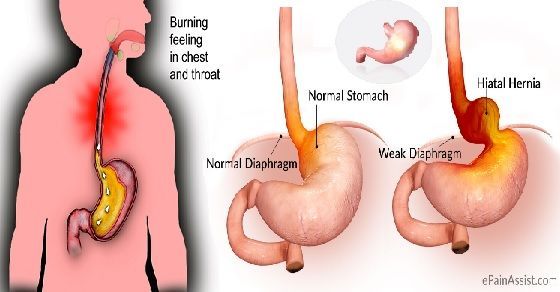
Fundoplication, as a rule, is performed by the following methods:
- the author’s method of Academician A.F. Chernousov, the founder of antireflux surgery in Russia; This is a laparoscopic fundoplication, due to which a lasting effect is achieved with a recurrence probability of only 2% within a year from the moment of operation.
- Nissen fundoplication involves the formation of a cuff around the esophagus to maintain the correct functioning of its lower sphincter. This is a classic operation used to treat HH, but it has several disadvantages. For example, the lower esophageal sphincter is blocked not only for gastric juice, but also for the release of gases, which provokes bloating. In some cases, there is a relapse of the disease.
- The Tope fundoplication differs from the Nissen method in the degree of fundus turnover (270 degrees) and, most importantly, in the complete preservation of the function of the lower esophageal sphincter.
Dietary restriction and rest for about three weeks is the key to a successful and quick recovery. In most cases, if the hernia of the esophageal opening of the diaphragm is removed in a timely manner and the treatment was carried out taking into account all the recommendations, the patient will be guaranteed to be able to return to his usual way of life.
In most cases, if the hernia of the esophageal opening of the diaphragm is removed in a timely manner and the treatment was carried out taking into account all the recommendations, the patient will be guaranteed to be able to return to his usual way of life.
Branches and departments that treat hiatal hernia
hiatal hernia. My history. Nadezhda, 61 years old
WHERE IT ALL STARTED
I knew that I have such a hernia for a long time, probably 10 years, but it didn’t give me any special problems, except for heartburn, so I didn’t do anything with it – why touch what doesn’t hurt, I thought. But a few years ago I had pain behind the sternum, in the hypochondrium and in the region of the heart. When the pain became so severe that I could no longer eat or even drink water, I called an ambulance. The arriving team gave an anesthetic injection, the doctor said to urgently go to the clinic.
At the clinic, the therapist referred me for a gastroscopy, after which I was prescribed medication for heartburn and stomach pain. I took them for a while, but there was no improvement, so the doctor advised me to have an operation.
I took them for a while, but there was no improvement, so the doctor advised me to have an operation.
The polyclinic recommended several hospitals where I could go for help. My mother-in-law was treated at City Clinical Hospital No. 52, so I chose this hospital. I quickly collected all the necessary documents and analyzes and arrived for a planned hospitalization.
MY SURGERY
Of course, I don’t remember how the operation went. Due to my age, I already had to lie in the hospital, but the fear of the unknown was still present. Before the operation, both the anesthesiologist and the operating surgeon came to my ward, we talked with them in detail, and, of course, I calmed down a bit.
RECOVERY
I quickly recovered from anesthesia, but after the operation I had an attack of atrial fibrillation, so I spent a little more time in intensive care than would have been required after my operation. But there was a certain plus in this, the doctors conducted additional examinations – they checked from head to toe.
I became active immediately when I returned to the department. Every day I feel better, there are no previous complaints.
MY IMPRESSIONS OF THE STAFF AND THE HOSPITAL
My impressions of the hospital and the staff are only positive: I have been in different hospitals more than once and have undergone several operations, but I have never seen such care, warmth and attention anywhere. I thought – well, who would bother with an elderly, overweight woman with a bunch of additional sores, but it turned out to be the opposite – doctors and nurses came all the time to check on my condition, the doctors on duty treated me like “their” patient. There was no such “hospital” feeling when you want to run home as soon as possible.
I have been in the hospital for a total of 8 days and now I feel well, I no longer take painkillers, I can drink and eat normally, of course I follow the doctor’s advice and diet. And I already want to go to the country – my strength has returned!
I would like to thank all the staff of the hospital, but first of all, surgeons Mudarisov Rinat Rifkatovich, Mazmanyan David Zhoraevich, Mnoyan Artur Khachaturovich, anesthetist Nikolai Vladimirovich Balaev, operating sister Borisova Olga Nikolaevna, nurse anesthetist Nadezhda Pavlovna Popova and all the doctors and nurses whom I had the pleasure of meeting.

 They then wrap parts of the stomach — the cardia and the fundus — around the esophagus.
They then wrap parts of the stomach — the cardia and the fundus — around the esophagus. This prevents acid from leaking up into the esophagus.
This prevents acid from leaking up into the esophagus.